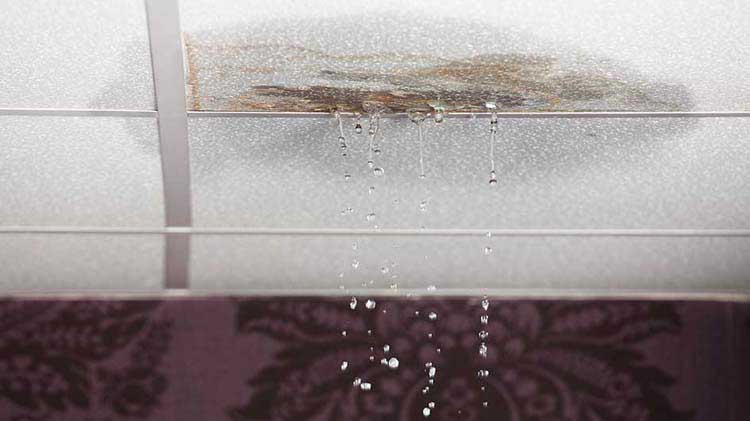The article author is making several great pointers on How to detect water leaks in your home as a whole in this article followed below.

Leakages not only trigger waste of water however can likewise cause unnecessary damage to your home and advertise undesirable natural development. Regrettably, water leaks might go unnoticed since most of the pipework in our residence is hidden. By understanding and looking for everyday scenarios that create leakages, you can safeguard your home from future leaks as well as unnecessary damages. Today, we will certainly check out six leakage triggers that may be creating your pipes to drip.
Intruding roots
Many water leakages start outside the residence rather than inside it. You could discover damp patches or sinkholes in your backyard, and that could mean that tree origins are getting into water lines causing water to permeate out.
Corroded water supply
As time passes by, your plumbing system ages and deterioration such as corrosion may start gnawing the pipes. This may be the root cause of staining or bending on your water pipes. This requires an inspection with your plumber promptly. Think about replacing the pipelines given that they are at a higher danger of rust than the newer models if our plumbing system is old.
Malfunctioning Pipeline Joints
The point at which your pipelines attach is frequently the weakest link in the waterline. Pipeline joints can wear away over time, resulting in water leaks. Sadly, most of pipeline joints are not easily visible. If you have loud pipelines that make ticking or banging sounds, specifically when the warm water is activated, your pipe joints are most likely under a lot of pressure. It is recommended to have your plumber inspect your system once a year.
Instantaneous temperature level modifications.
Extreme temperature level modifications in our pipes can create them to increase and also acquire suddenly. This expansion and also contraction might trigger cracks in the pipelines, specifically if the temperature are listed below freezing.
Poor Water Connectors
At times, a leakage can be brought on by loose hoses and also pipes that provide your appliances. Typically, moving is what creates the loosened water Connections. You could discover in the case of a washing equipment, a hose pipe might spring a leakage due to trembling during the spin cycle. In case of a water links leak, you might see water running directly from the supply line or pools around your home appliances.
Obstructed Drains
Obstructed drains may be irritating and inconveniencing, but they can in some cases wind up causing an overflow bring about burst pipelines. Maintain removing any type of products that may decrease your drains pipes that could block them to prevent such aggravations.
All the above are causes of leakages yet not all water leaks result from plumbing leaks; some leakages might originate from roofing leaks. All leakages should be fixed immediately to avoid water damage.
Leaks not just create waste of water yet can likewise trigger unneeded damages to your home as well as promote unwanted natural growth. By comprehending and also looking for daily scenarios that create leaks, you can shield your residence from future leaks as well as unneeded damage. Today, we will look at six leakage creates that might be triggering your pipelines to trickle.
At times, a leak can be triggered by loosened pipes and also pipelines that provide your devices. In instance of a water links leakage, you might see water running straight from the supply line or pools around your home appliances.
How To Check For Water Leak In Your Home
How To Check for Leaks
The average household's leaks can account for nearly 10,000 gallons of water wasted every year and ten percent of homes have leaks that waste 90 gallons or more per day. Common types of leaks found in the home are worn toilet flappers, dripping faucets, and other leaking valves. These types of leaks are often easy to fix, requiring only a few tools and hardware that can pay for themselves in water savings. Fixing easily corrected household water leaks can save homeowners about 10 percent on their water bills.
To check for leaks in your home, you first need to determine whether you're wasting water and then identify the source of the leak. Here are some tips for finding leaks:
Take a look at your water usage during a colder month, such as January or February. If a family of four exceeds 12,000 gallons per month, there are serious leaks.
Check your water meter before and after a two-hour period when no water is being used. If the meter changes at all, you probably have a leak.
Identify toilet leaks by placing a drop of food coloring in the toilet tank. If any color shows up in the bowl after 10 minutes, you have a leak. (Be sure to flush immediately after the experiment to avoid staining the tank.)
Examine faucet gaskets and pipe fittings for any water on the outside of the pipe to check for surface leaks.
Undetected water leaks can happen without the home or business owner even realizing. If you suspect a water leak, but not able to find the source. It is time to contact a professional water leak detection service, The Leak Doctor.
How To Find a Water Leak In Your Home
https://www.leakdoctor.com/blog/How-To-Check-For-Water-Leak-In-Your-Home_AE197.html

Do you enjoy more info about Common Water Leaks In House? Leave a remark down the page. We'd be glad to listen to your ideas about this piece. We are looking forward that you come back again in the near future. Those who enjoyed our page kindly don't forget to share it. Thank you for going through it.
Effective solutions available.